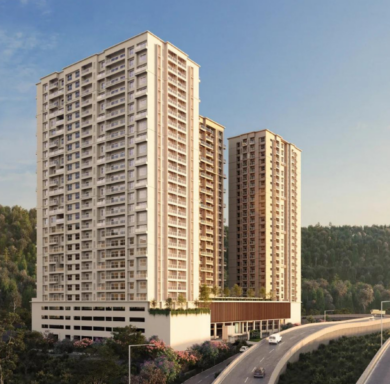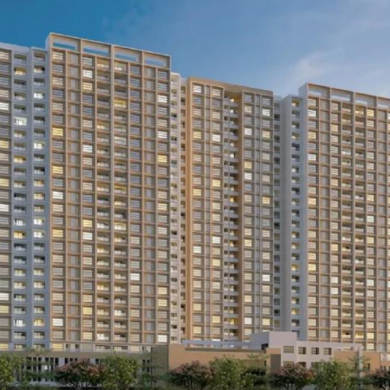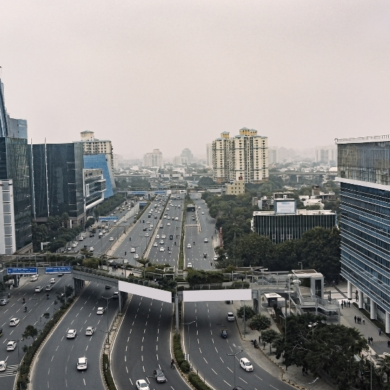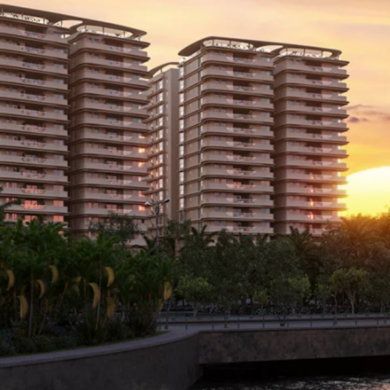Understanding Carpet Area, Built-up Area, and Super Built-up Area
June 2nd, 2024
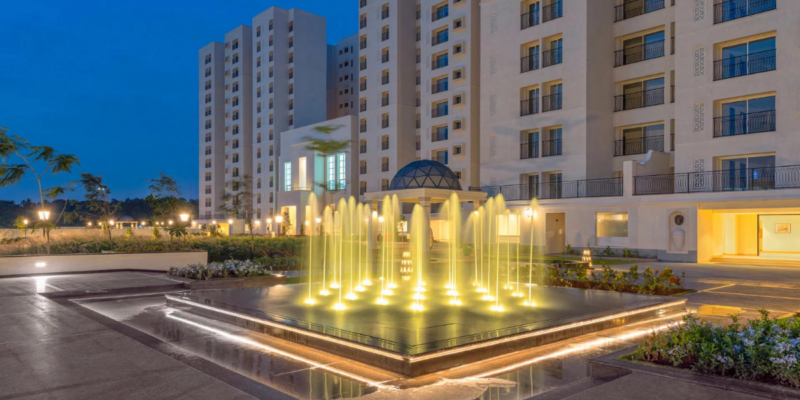
Understanding carpet, built-up, and super built-up areas is key for real estate decisions. Carpet area is the usable space, built-up includes wall thickness, and super built-up covers shared amenities.
Homebuyers who understand the concept of carpet area, built-up area, and super built-up area are better suited to make decisions over those who may not be able to differentiate one from another. A proper understanding of these real estate terms ensures that you are not overwhelmed when you encounter them.
When buying a house, you usually pay for the number of square feet you are going to be occupying. It is best to know what it is that you will be paying for and why. This is where developers could use terms such as Carpet Area, RERA Carpet Area, Built-up Area, Loading Factor, Super Built-up Area, and more.
In this blog, we have simplified all these terms with relevant formulae and examples for your understanding. A quick glance through this before you head out hunting for your ideal home will help you stay ahead in the game.
Table of Contents
What is Carpet Area?
The area of an apartment that can be covered by a carpet or the net usable area is known as the carpet area. This includes the areas of the bedroom, living room, kitchen, bathrooms, and staircases within the house / flat, i.e. areas you can actually cover with a carpet and use. It does not include the external walls, terraces, common areas, lifts, corridors, utility ducts, etc.
What is RERA Carpet Area?
According to the RERA Act 2016, the RERA Carpet Area is the net usable floor area of an apartment or house excluding the external area, common areas, exclusive balcony or veranda area, and exclusive open terrace area, but includes the area covered by the internal partition walls.
Note: As used herein, ‘exclusive balcony or veranda area’ is the area of the balcony or veranda that is attached to the net usable floor area of an apartment, reserved for the exclusive use of the allottee (house owner); and ‘exclusive open terrace area’ is the area of open terrace attached to the net usable floor area of an apartment, reserved for the exclusive use of the allottee (house owner).
What is the Difference Between RERA Carpet Area & Carpet Area?
The only difference between RERA Carpet Area and Carpet Area is the thickness of the internal partition walls. In RERA Carpet Area, the thickness of the internal walls is included while in the general Carpet Area it is excluded. Usually, RERA Carpet Area is 5% more than the general Carpet Area.
How to Calculate Carpet Area & RERA Carpet Area?
General Carpet Area Calculation
The carpet area can be calculated by a simple formula, which is:
Carpet Area = (area of bedroom + living room + kitchen + toilets) – thickness of the inner walls
In most cases, the carpet area in your apartment is typically between 80% to 90% of its total built-up area. Let us take an example of a real apartment carpet area calculation. Suppose an apartment has a 1392.65 sq ft built-up area, and 82.8 % of that is the General Carpet Area. Then, 82.8% of 1392.65 sq ft = 1153.11 is the General Carpet Area.
RERA Carpet Area Calculation
According to the RERA Act 2016, RERA Carpet Area can be calculated by:
RERA Carpet Area = Net Usable Area of the Apartment (excluding external walls, terrace area, balcony area, & veranda area) + Areas of the Internal Partition Walls
As we saw above, there is a 5% difference between the General Carpet Area & RERA Carpet Area. If you have 1153.11 sq ft of General Carpet Area, then the RERA Carpet Area will be 1153.11*(1+0.05) = 1211 sq ft.
What is a Built-up Area?
The built-up area is the sum of the carpet area and the area of both the exterior and interior walls, balcony, interior staircase, and other liveable areas if any. If there is an exclusive terrace, then that too is included. The built-up area comprises around 70-80% of the super built-up area.
How to Calculate Built-up Area?
The built-up area is calculated by adding both interior & exterior wall areas, exclusive balcony, and corridor, to the Carpet Area or RERA Carpet Area.
Built-up Area= Carpet Area + Wall Areas + Terrace and Balcony + Exclusive Corridor if any
Usually, the Built-up area is 10% to 20% more than the Carpet Area. So, if your RERA Carpet Area is 1211 sq ft, then the built-up area will be between 1332 sq ft and 1453 sq ft.
Carpet Area Vs Built Up Area
- Difference between Carpet Area and Built-up Area: RERA Carpet Area is measured by adding the area of the bedroom, living room, kitchen, toilets, and the thickness of the internal partition walls, while the built-up area is the summation of RERA carpet area, external wall area, terrace, or balcony and exclusive corridor.
- The Built-up Area is always more than the Carpet Area and it excludes common areas such as the lift, security room, lobby, clubhouse, etc.
Read More: Super Built-up Area vs Carpet Area: Unveiling the Key Differences
What is Super Built-up Area?
Super built-up area is referred to as the ‘saleable area’ and homebuyers are usually charged based on this value. It is the sum of the exclusive built-up area, and common areas including the lift, corridors, staircase, clubhouse, and other amenities.
However, it does not include the area of compound walls, open-to-sky swimming pools, parks, driveways, open sports facilities, inaccessible garden areas, play areas, underground sinks, water tanks, and septic tanks.
The proportionate share of common areas is referred to as the ‘Loading Factor’ and is assigned a percentage that usually ranges from 25% to 60% of the carpet area. If the loading factor is 50% and your carpet area is 1211 sq. ft., then the super built-up area would be 1816 sq. ft.
How to Calculate Super Built-up Area?
Super built-up area is calculated by adding the built-up area and the proportionate common area. It can also be calculated by multiplying the carpet area and (1 + loading factor).
E.g. 1211 sq ft x (1+0.5) = 1816 sq ft
Assume you own a 1000 sq ft flat on the third floor, and your friend owns a 2000 sq ft flat on the same floor. If the total space of the common area is 1500 sq ft, the developer would split the common area in the ratio of the built-up area.
In this case, the ratio is 1:2 and hence, the builder will add 500 sq ft to your apartment and 1000 sq ft to your friend’s. Now, the super built-up area of your property will be 1500 sq ft and the SBA of your friend’s property will be 3000 sq ft.
What is The Loading Factor?
The difference between the super built-up area and the carpet area of the flat is known as the Loading Factor. This is used to add constructed spaces that are not exclusive to your home, such as the elevators, lobby, amenities, etc. If the Loading Factor is 1.50, it suggests that the builder has added 50% to your carpet area.
How to Calculate the Loading Factor?
If the super built-up area is 1816 sq ft, and the carpet area is 1211 sq ft, then:
Loading Factor = (Super Built-up Area – Carpet Area)/Carpet Area
Loading Factor = (1816 – 1211)/1211
Loading Factor = 0.50
The loading factor, therefore, is 50%.
Why You Should Know About the Loading Factor?
Ideally, the Loading Factor for luxury apartments should be below 60%. Any value above that would mean that there is a higher super built-up area and smaller carpet area. This means that homebuyers would be settling for smaller homes. With this value in mind, homebuyers can make an informed decision about how much they are paying and for what.
Built-Up Area Vs Super Built-up Area
Built-up area includes carpet area, balcony, exclusive corridor, exclusive terrace, internal staircase, and thickness of all walls, while Super Built-up Area includes built-up area plus common areas such as lifts, common corridors, staircases, clubhouse, and other amenities, and is also known as saleable area.
Difference Between Carpet area, Built-up Area, And Super Built-up Area
|
Carpet Area |
Built-up Area |
Super Built-up Area |
|
|
Living Room / Common Hall |
Yes | Yes |
Yes |
|
Bedroom |
Yes | Yes |
Yes |
|
Kitchen |
Yes | Yes |
Yes |
|
Dining Room |
Yes | Yes |
Yes |
|
Bathrooms |
Yes | Yes |
Yes |
|
Prayer Room |
Yes | Yes |
Yes |
|
Balcony |
No | Yes |
Yes |
|
Study Room |
Yes | Yes |
Yes |
|
Utility Area |
No | Yes |
Yes |
|
Inner Staircase |
Yes | Yes |
Yes |
|
Exclusive Terrace |
No | Yes |
Yes |
|
Exclusive Veranda |
No | Yes |
Yes |
|
Outer Staircase |
No | No |
Yes |
|
Lobby |
No | No |
Yes |
|
Lift |
No | No |
Yes |
|
Open-to-Air Swimming Pool |
No | No |
No |
|
Garden |
No | No |
Yes |
In the above table, you can see areas like the living room, bedrooms, dining room, bathrooms, and inner staircases featured in all three categories. However, outer staircase, lift, lobby, and common gardens are featured under super built-up area. These are not featured under carpet area and built-up area. To simplify, Carpet Area < Built-up Area < Super Built-up Area.
Key Considerations for Buyers
- Focus on Carpet Area: Prioritise the carpet area as it reflects the actual usable space within your property.
- Comparison Based on Carpet Area: To get a true sense of usable space, use carpet area measurements while comparing different properties.
- Understanding Built-up and Super Built-up Areas: Be mindful of these areas listed by builders, as they include additional spaces.
- Ratio Inquiry: Request the ratio of carpet area to built-up and super built-up areas, to get a clearer picture.
- Cost Consideration: Evaluate the cost per square foot of the carpet area when making purchasing decisions.
Conclusion
The key differences between carpet area, built-up area, and super built-up area are that the carpet area refers to the net usable space, built-up area includes the carpet area plus walls and other spaces, and the super built-up area encompasses common areas and shared amenities.
Homebuyers should prioritise and compare the carpet area of different homes, while also considering these additional factors. Before buying a property, research and understand these terms. Consult a real estate professional for further guidance to take an informed decision.
FAQs
1. What is meant by Carpet Area?
Carpet area is the usable floor space within an apartment or house. Imagine laying down the carpet; the area it covers is the carpet area. This excludes external walls, utility ducts, etc. It is the space you can freely move around and use.
2. What is meant by Built-up Area?
Built-up area includes carpet area plus the thickness of walls and some additional areas like exclusive balconies and terraces. Built-up area is always more than carpet area, as it essentially considers the total area covered by the home's walls.
3. What is meant by Super Built-up Area?
Super built-up area includes the built-up area plus a proportionate share of common areas such as lobbies, staircases, and amenities. SBA is the biggest of the three. It includes the carpet area, the thickness of inner & outer walls, and a proportionate share of common areas like hallways, lobbies, elevators, and amenities. This is the area used to calculate the final price of your apartment, so knowing it is crucial.
4. How do developers use Super Built-up Area?
Developers use the super built-up area to divide the cost of common facilities and areas among all homebuyers in a building, ensuring everyone contributes to the design & construction of these shared spaces.
5. Is there a standard percentage for Super Built-up Area?
No, there is no standard percentage for super built-up area as it depends on the project design. However, it generally ranges between 25% to 30% of the carpet area.
6. How can I verify the Carpet Area in my property?
To verify the carpet area, you can measure the dimensions of each room and calculate the total usable area. Comparing this with the developer’s plans can ensure accuracy.
7. Should I focus more on Carpet Area, Built-up Area, or Super Built-up Area when buying a property?
Carpet area is crucial as it represents the actual usable space inside your home. However, understanding built-up and super built-up areas helps you know what you are paying for, including walls and common facilities.
8. Are carpet area and built-up area the same thing?
No, carpet area and built-up area are not the same thing. Carpet area is the usable floor space within an apartment, excluding external walls, balconies, etc. Built-up area is larger and includes the carpet area plus the area occupied by walls, balconies, utility ducts, etc.
9. Which area is more important to consider when buying a property?
Carpet area is more important to consider when buying a property as it reflects the actual living space you get. However, it is also important to be aware of the built-up area and super built-up area, to understand the total cost involved.
10. How can I calculate the carpet area of my apartment?
You can calculate the carpet area of your apartment by measuring the length and width of each room, multiplying the length by width to get the area of each room, and adding the areas of all the rooms to get the total carpet area.
11. Why is the super built-up area always higher than the carpet area?
The super built-up area is always higher than the carpet area, as it includes the carpet area plus wall thickness and balconies plus a proportionate share of common areas like hallways, lobbies, elevators, and amenities.
12. What is a loading factor, and how does it affect the super built-up area?
Loading factor is a multiplier applied to the carpet area to calculate the super built-up area. SBA = Carpet Area *(1 + Loading Factor). It accounts for the cost of common areas that are proportionally distributed among all the apartments in the building.

